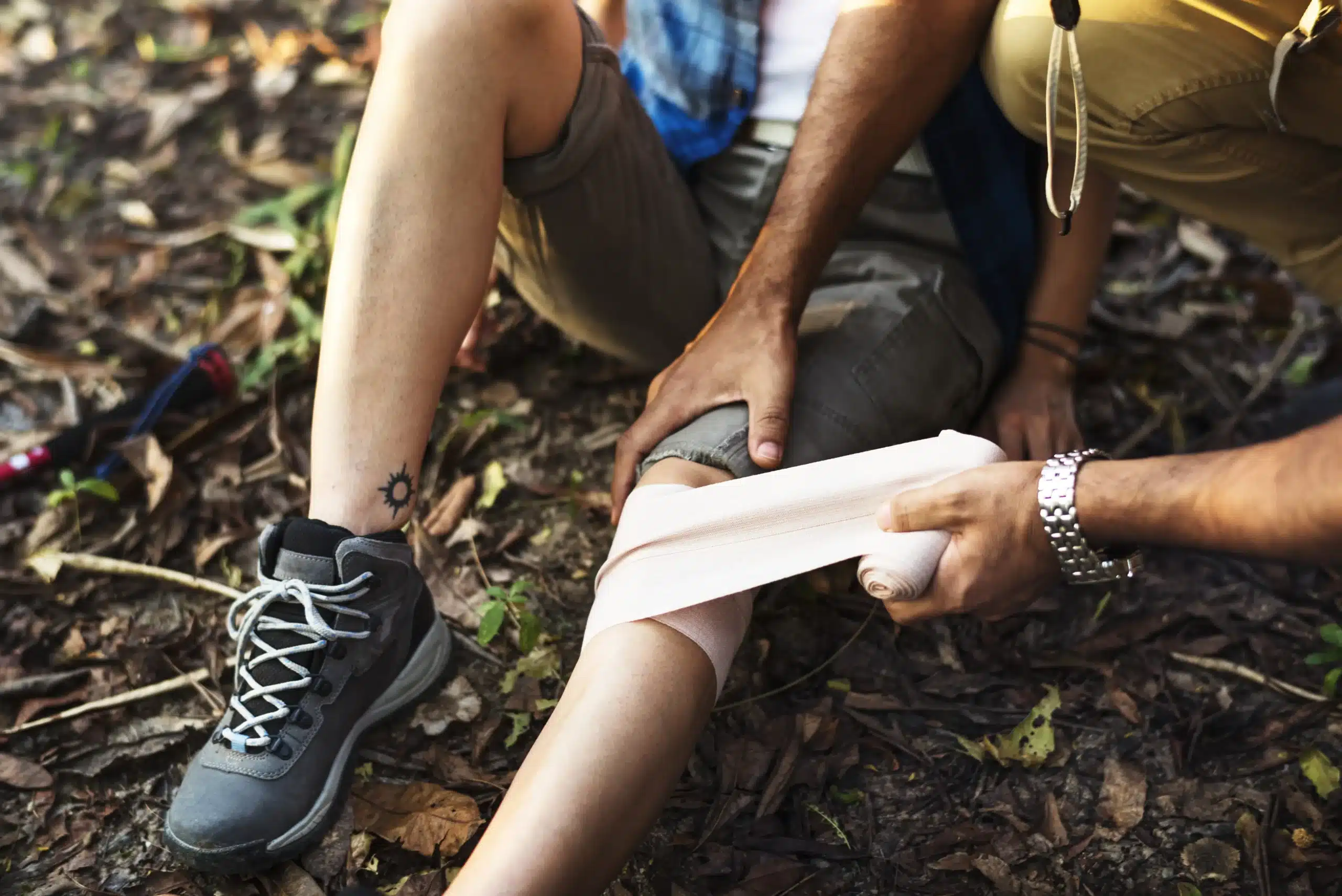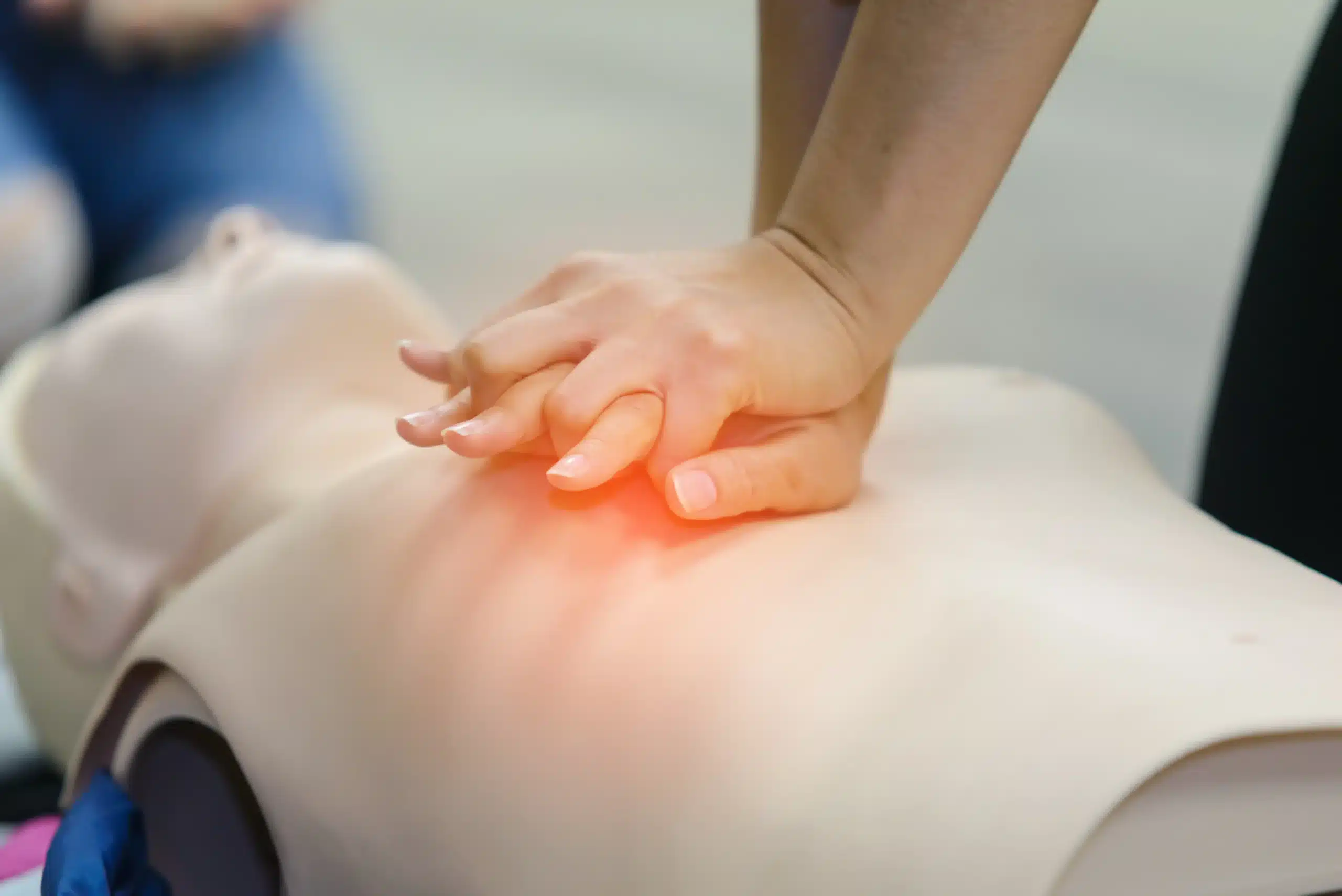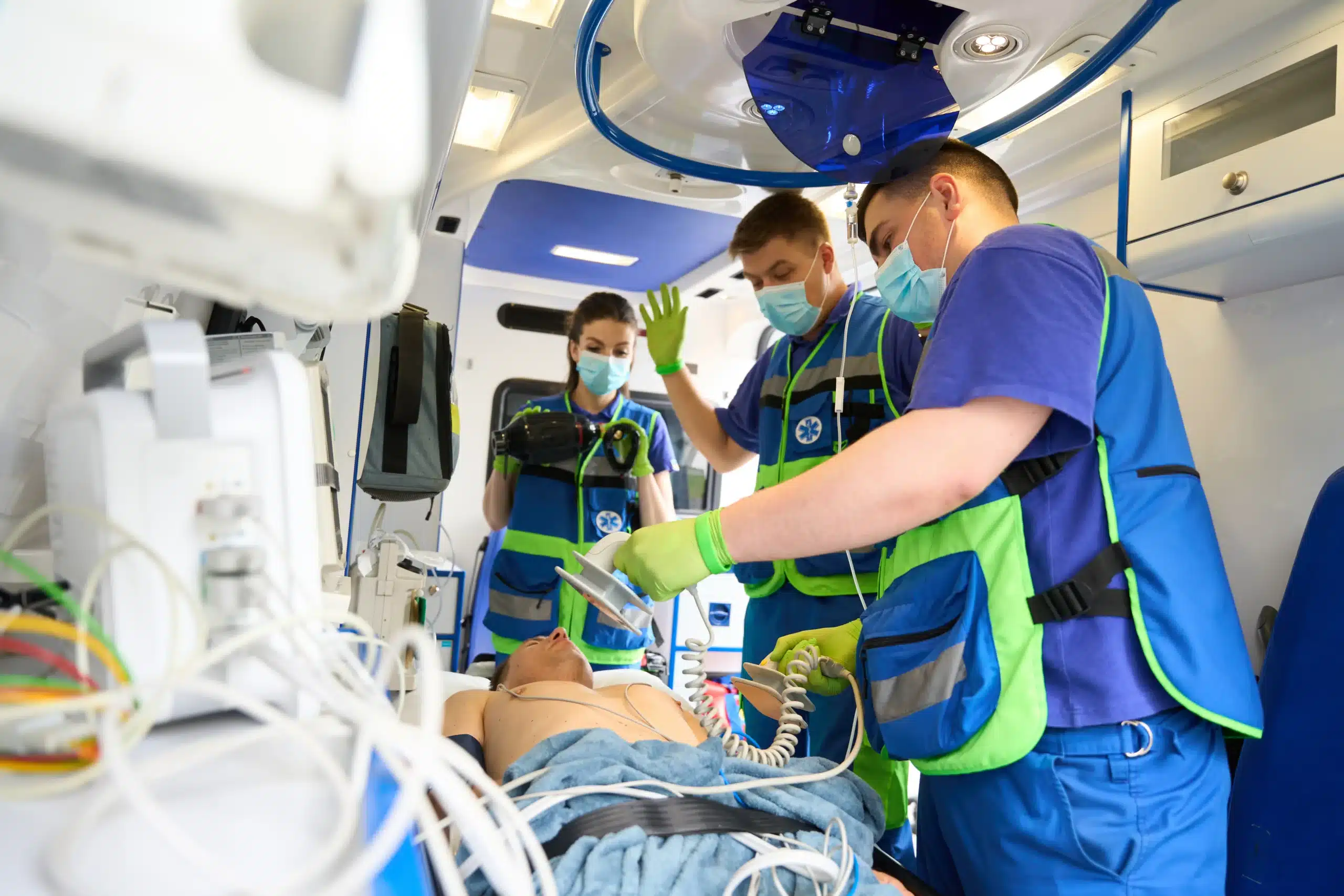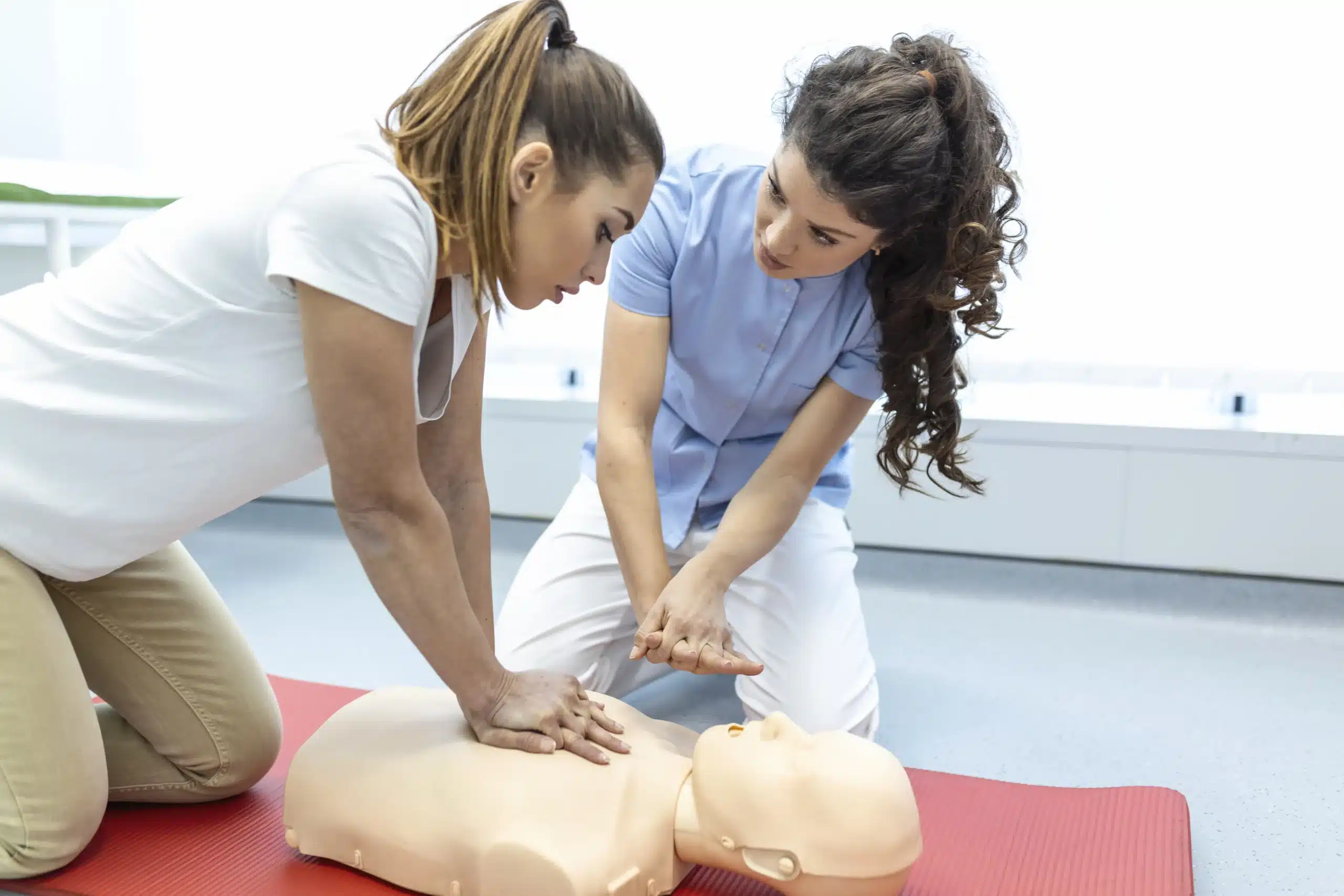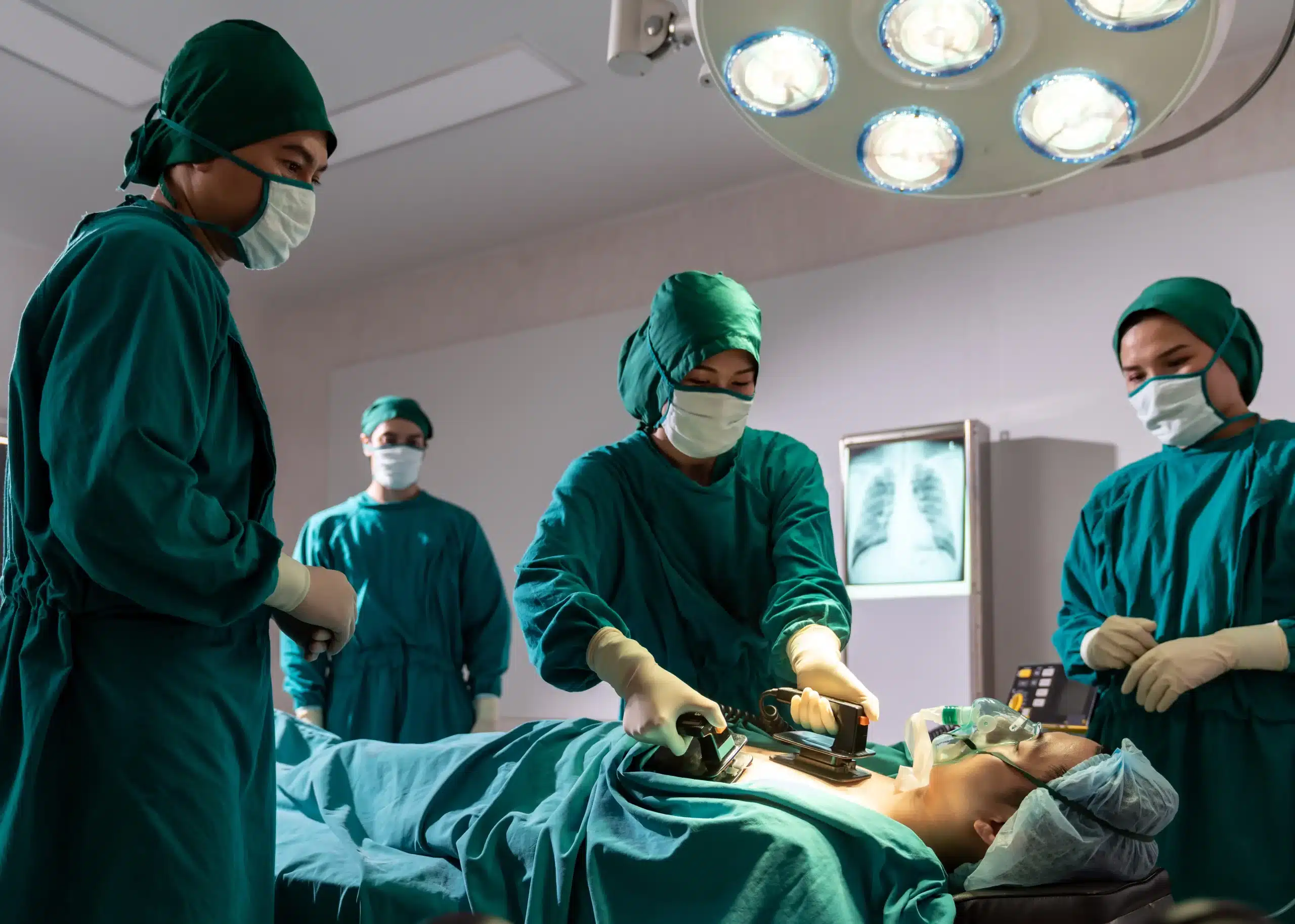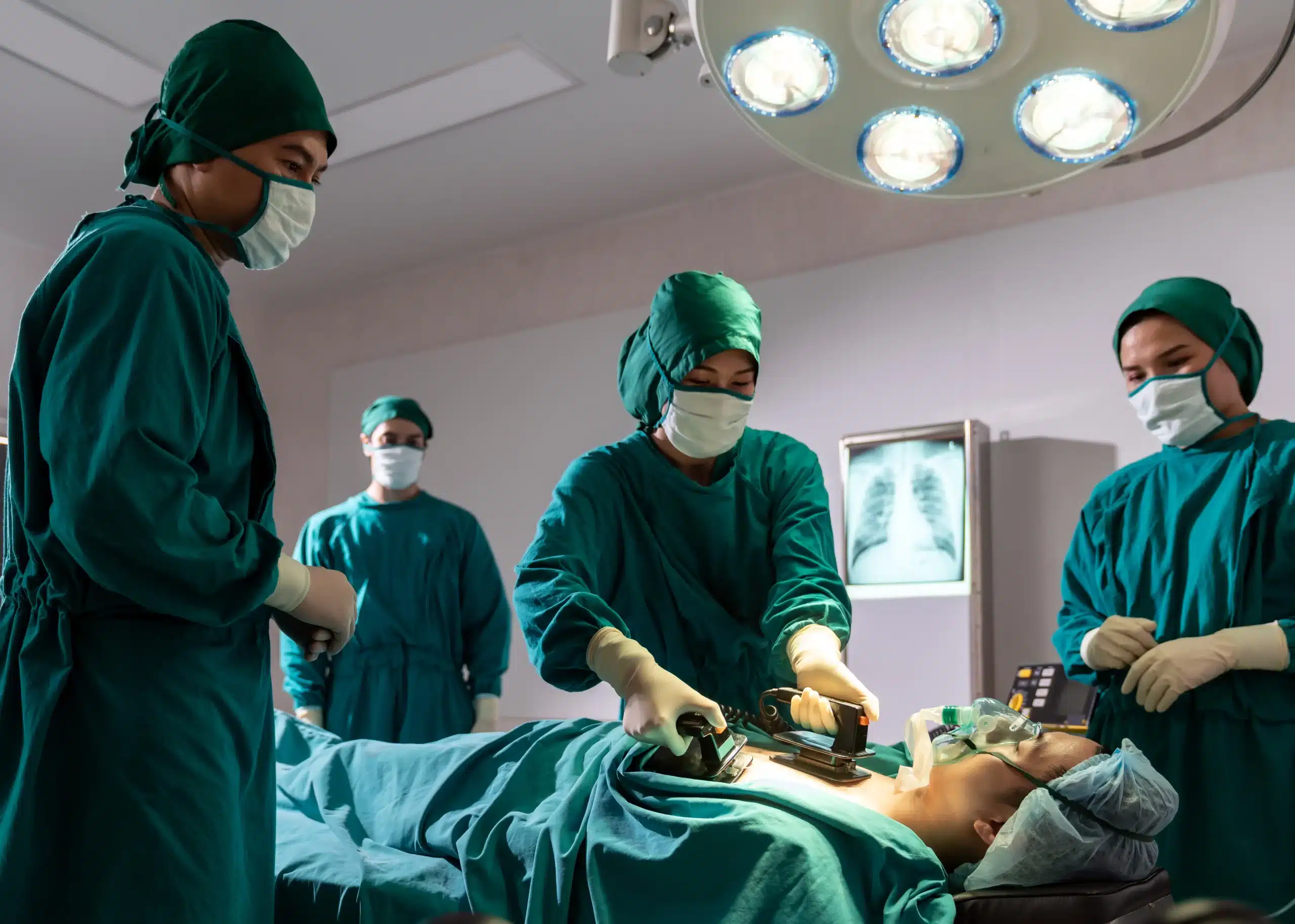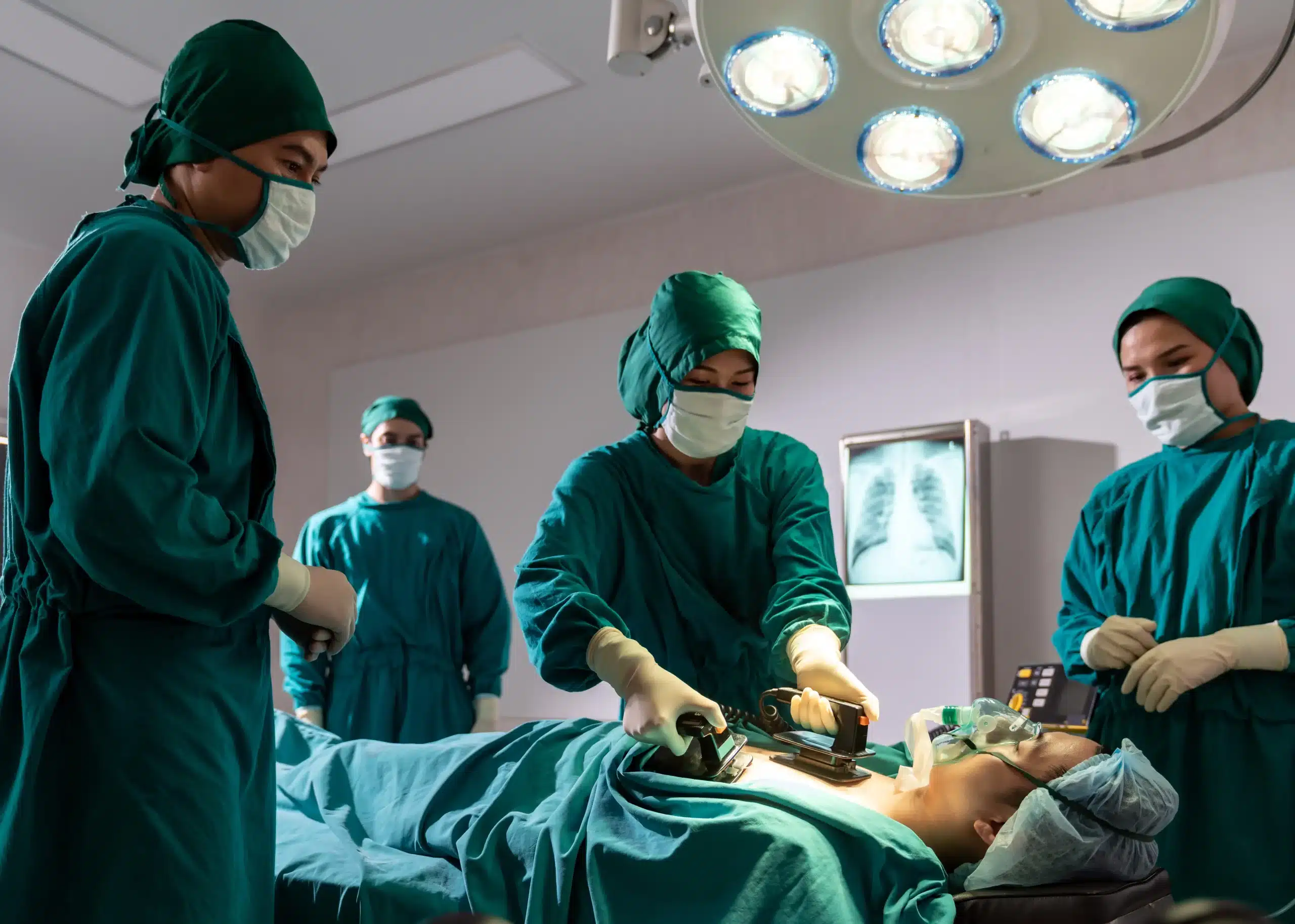Life is unpredictable, and emergencies can happen when we least expect them. Knowing CPR can give you the confidence and skills to respond effectively in such situations. This guide is your comprehensive resource for understanding CPR and finding the right training for you. We’ll cover the importance of CPR, the different types of courses available (including “CPR courses near me”), and what to expect during training. We’ll also discuss how to choose a reputable training provider, the costs involved, and how to maintain your certification. Whether you’re a medical professional, a childcare provider, or simply someone who wants to be prepared, this guide will equip you with the knowledge and resources you need to become a confident lifesaver.
Key Takeaways
- CPR can save lives: Equipping yourself with CPR training empowers you to respond confidently during emergencies and significantly improves survival outcomes for cardiac arrest victims. Explore the various course options available to find the best fit for your needs.
- CPR training is convenient and budget-friendly: With diverse learning formats like online, in-person, and blended learning, plus competitive pricing and group discounts, CPR training is accessible to everyone. Find a course that suits your schedule and budget.
- Stay current with your CPR skills: Regularly refresh your knowledge and renew your certification every two years to maintain your preparedness. Staying up-to-date with the latest guidelines ensures you can provide effective assistance when it matters most.
What is CPR? Why is it Important?
Cardiopulmonary resuscitation (CPR) is a lifesaving technique used in emergencies when someone’s breathing or heartbeat has stopped. It combines chest compressions and rescue breaths to keep blood flowing to the brain and other vital organs until professional help arrives. Learning CPR empowers you to respond effectively during such critical situations.
CPR can dramatically increase the odds of survival after cardiac arrest. The American Heart Association states that immediate CPR can double or even triple a person’s chance of surviving. Given that cardiac arrest claims hundreds of thousands of lives annually in the United States, the need for widespread CPR training is clear. CPR certification courses equip individuals with the skills and confidence to act quickly and effectively in such emergencies.
When cardiac arrest happens, the heart stops beating, cutting off blood flow to vital organs, especially the brain. High-quality chest compressions are crucial. They help circulate oxygenated blood, which is essential for survival. CPR buys precious time, bridging the gap before professional help arrives and potentially increasing the chances of a positive outcome. The sooner CPR begins, the better the outcome, making it the critical first line of defense in many emergencies. Knowing CPR can truly make a life-saving difference, and wider CPR training is essential for community safety.
CPR Courses Near You
Finding the right CPR class can feel overwhelming, but it doesn’t have to be. This section breaks down the different types of CPR courses available near you in San Rafael, Corte Madera, and Fairfax, California, so you can find the perfect fit. We’ll cover everything from basic CPR training to specialized certifications for healthcare providers and childcare professionals. San Rafael CPR Classes offers a low price guarantee on all courses.
Basic CPR
Basic CPR courses teach the core skills needed to respond to cardiac arrest and breathing emergencies in adults, children, and infants. These courses cover essential techniques like chest compressions, rescue breaths, and how to recognize the signs of a cardiac event. Basic CPR certification is a great option for anyone who wants to learn these lifesaving skills, including teachers, coaches, parents, and other community members. San Rafael offers various CPR course formats, including in-person, blended learning, and online options, allowing you to choose what works best for your schedule and learning style.
Healthcare Provider CPR
Healthcare providers, such as doctors, nurses, and EMTs, require a more advanced level of CPR training. BLS certification courses in San Rafael, like those offered by San Rafael CPR Classes, are based on the American Heart Association guidelines. BLS covers advanced airway management, two-rescuer CPR, and using an AED (automated external defibrillator). This training is crucial for medical professionals who respond to emergencies in a clinical setting. Consider the RQI program for a quick and efficient certification process.
Pediatric CPR
Working with children? Pediatric CPR training focuses on the specific techniques for responding to cardiac and breathing emergencies in infants and children. These courses often cover topics like choking hazards, SIDS (Sudden Infant Death Syndrome), and adapting CPR techniques for smaller bodies. Pediatric CPR is essential for childcare providers, nannies, parents, and anyone who regularly interacts with young children. Explore a wide range of courses, including BLS, ACLS, PALS, and First Aid, plus specialized programs like the EMSA Child Care Health & Safety program.
First Aid + CPR
Combining First Aid and CPR training provides a comprehensive approach to emergency preparedness. You’ll learn how to respond to various situations, from treating minor injuries like cuts and burns to managing more serious medical emergencies like heart attacks and strokes. This combined certification is valuable for anyone who wants to be prepared for any situation. Check our Northern California CPR directory for more resources.
What Happens in a CPR Course?
CPR courses equip you with the skills to respond effectively during medical emergencies. They blend theoretical knowledge with practical exercises, ensuring you’re prepared to act confidently when needed. Let’s break down what you can expect during your training.
Course Length & Certification
CPR courses are designed to be concise and impactful. Many providers offer a two-hour training session covering essential CPR techniques and how to use an automated external defibrillator (AED). You can find these courses for around $35 per person. More comprehensive courses, like those including First Aid or specific certifications like Basic Life Support (BLS), may require additional time. Upon successful completion, you’ll receive a certification valid for two years, demonstrating your CPR proficiency.
Hands-on Skills & Assessment
CPR training isn’t just about lectures and videos. You’ll actively participate in hands-on practice, performing CPR on mannequins and learning to assess a patient’s condition. This practical experience builds muscle memory and confidence, crucial for effective performance in real-life situations. Many courses, such as Advanced Cardiovascular Life Support (ACLS) and Pediatric Advanced Life Support (PALS), integrate these hands-on skills with theoretical knowledge to provide a well-rounded learning experience.
In-Person, Online, & Blended Learning
CPR training offers flexible learning options to suit your lifestyle. Traditional in-person classes provide direct interaction with instructors and peers, fostering a collaborative learning environment. Online courses offer convenience and self-paced learning, allowing you to study anytime, anywhere. Blended learning combines the benefits of both formats, offering online modules supplemented by in-person skills sessions. This variety ensures you can find a CPR course that fits your schedule and learning preferences.
Find & Choose a CPR Course
Finding the right CPR class involves a bit of research, but it’s worth the effort to ensure you receive quality training. Here’s how to find CPR training near you and choose a course that fits your needs.
Online Tools & Local Resources
Start your search online. A quick Google search for “CPR classes near me” will generate a list of potential training providers in your area. You can also use online directories like the Northern CA CPR Directory for a more focused search. Don’t forget to check community centers, local hospitals, and fire departments, as they often offer CPR courses. San Rafael offers various CPR course formats, including in-person, blended learning, and online options, allowing you to choose the best fit for your schedule and learning preferences. Consider factors like class size, location, and schedule flexibility when making your decision. For a comprehensive guide to CPR certification in San Rafael, check out this helpful resource.
Evaluate Training Providers
Once you’ve identified a few potential training providers, it’s essential to evaluate their credentials. Look for providers who offer certification through reputable organizations like the American Heart Association or the American Red Cross. For example, Safety Training Seminars offers American Heart Association BLS, ACLS, PALS, First-aid, and CPR classes in San Rafael. Ensure the instructors are certified and experienced in teaching CPR. A low price guarantee, like the one offered by San Rafael CPR Classes, can also be a deciding factor. If you’re a medical professional seeking efficient certification, consider programs like the RQI program for quick and convenient training. Check if the provider offers courses like the American Heart Association BLS or the EMSA Child Care Health & Safety course.
Check Reviews & Testimonials
Before committing to a CPR course, take the time to read reviews and testimonials from previous students. Websites like Yelp can offer valuable insights into the quality of instruction, course materials, and overall learning experience. Hearing from others who have taken the course can give you a better sense of what to expect and help you make an informed decision. Look for comments about the instructor’s teaching style, the hands-on practice opportunities, and the clarity of the course materials.
How Much Do CPR Courses Cost?
CPR certification is an investment in yourself and your community, and thankfully, it’s usually pretty affordable. Understanding the factors that influence CPR course costs can help you find the best value for your needs.
Average Prices & Discounts
CPR course costs depend on several factors, including the course type, location, and training provider. A basic two-hour CPR and AED course typically costs around $35 per person. However, group discounts often apply. For example, a company training a group of eight employees might pay around $280 for the same course, making it more cost-effective per person. You can find CPR training lessons in San Rafael with a quick online search.
Group & Corporate Rates
Many CPR training providers offer discounted rates for groups and corporate training. This can be a great option for businesses wanting to train their staff in Basic Life Support (BLS) or other certifications like Advanced Cardiovascular Life Support (ACLS), Pediatric Advanced Life Support (PALS), and First Aid. San Rafael CPR classes are a good place to start your search. Some providers also offer discounts for students and military personnel, so it’s always worth asking. Check with your local training centers and compare pricing. You can also browse online directories and reviews of CPR classes to find the best fit for your budget.
Prepare for Your CPR Course
Getting ready for your CPR class doesn’t have to be stressful. A little preparation beforehand ensures you’ll have a smooth and productive learning experience. Here’s what you should know:
What to Bring & How to Get Ready
San Rafael CPR Classes offers various CPR course formats, including in-person, blended learning, and online options, allowing you to choose the best fit for your schedule and preferences. Before your class, confirm the specific requirements with your chosen provider. Some courses may require pre-reading or online modules, so complete these beforehand. For in-person classes, bring a notebook and pen to take notes, though most courses provide materials. A water bottle is always a good idea, especially for longer sessions. Explore San Rafael CPR Classes’ course options, including BLS, ACLS, PALS, and First Aid, plus specialized programs like RQI and EMSA Child Care Health & Safety.
Dress Code & Physical Needs
For in-person training, dress comfortably. You’ll be practicing skills like chest compressions and rescue breaths, so comfortable clothing that allows for a full range of motion is best. Avoid restrictive clothing or high heels. You’ll be kneeling and moving around quite a bit. BLS certification courses involve more advanced skills than general CPR training, so be prepared for a more intensive learning experience. If you have any physical limitations or health concerns, inform your instructor beforehand. They can offer modifications or suggestions to ensure your comfort and full participation. Many providers, including San Rafael CPR Classes, offer group discounts for BLS training, along with other courses like ACLS, PALS, and First-aid.
Maintain Your CPR Certification
CPR skills are like any other—if you don’t use them, you lose them. Staying current with your CPR certification isn’t just a formality; it’s about ensuring you’re truly prepared to help in a crisis. Regular renewal and continued learning are key to maintaining those life-saving skills.
Renew & Continue Learning
CPR certifications are typically valid for two years. As your expiration date approaches, look for renewal courses offered by trusted providers like the American Red Cross or San Rafael CPR Classes. These refresher courses cover core CPR techniques and any updated guidelines, ensuring you’re always ready to respond effectively. Don’t wait until the last minute—sign up for your renewal a few weeks before your certification expires to avoid any lapse in your qualifications.
Stay Up-to-Date on Guidelines
CPR guidelines can evolve as medical knowledge advances. Staying informed about these changes is crucial for providing the most effective care. Regularly check for updates from reputable organizations like the American Heart Association and make sure your training aligns with the latest recommendations. Even small adjustments in technique can make a significant difference in an emergency. By prioritizing continuous learning, you’ll not only maintain your certification but also enhance your confidence and ability to provide critical care when it matters most.
Top CPR Training Providers
Finding the right CPR training provider is key to receiving quality instruction and a recognized certification. Here are some well-known organizations and training companies that offer CPR courses:
American Red Cross
The American Red Cross is a trusted name in emergency preparedness, offering various CPR classes and certifications. With convenient scheduling and numerous locations, they make it easier to find a class that fits your needs. The Red Cross prioritizes high-quality instruction from trained experts.
American Heart Association
The American Heart Association (AHA) is another leading provider of CPR training. Many organizations, including San Rafael CPR Classes, offer AHA-compliant courses, ensuring your training meets national standards. AHA certification is widely recognized and respected.
National Safety Council
The National Safety Council partners with various training centers to deliver CPR courses across the country. For example, you can find CPR classes in San Rafael through Safety Training Seminars. These courses are designed for both healthcare providers and the general public.
American Safety & Health Institute (ASHI)
ASHI offers a comprehensive selection of CPR and first aid training programs. Providers like San Rafael CPR Classes include ASHI certification among their offerings, giving students a variety of options.
ProTrainings
ProTrainings focuses on accessible and affordable CPR training with various learning formats. Their convenient online courses let you learn at your own pace, making them a good option for busy schedules.
San Rafael CPR Classes
San Rafael CPR Classes specializes in CPR, first aid, and other safety training in Marin County. They offer various programs, from standard CPR certification to specialized courses like RQI and EMSA Child Care Health & Safety. With in-person, blended learning, and online formats, they accommodate different learning styles and schedules. They also have a low price guarantee.
Choose the Right CPR Course
Finding the right CPR course means understanding your needs, learning style, and schedule. Let’s break down how to find the perfect fit.
Assess Your Needs & Goals
First, think about why you’re taking a CPR course. Are you a healthcare provider who needs American Heart Association BLS certification? Are you a parent wanting to learn basic life support for infants and children? Or do you need EMSA Child Care Health & Safety certification for your daycare job? Defining your goals will help you choose the right course. San Rafael CPR Classes offers various options, including BLS, ACLS, PALS, and First Aid. They also offer specialized programs like RQI classes for medical professionals.
Your Schedule & Learning Style
Think about how you learn best and what fits your life. Do you prefer hands-on learning in a classroom? Or do you prefer the flexibility of online learning? San Rafael CPR Classes offers in-person, blended learning, and online courses to accommodate different learning preferences and schedules. This makes it easy to find a course that works for you, whether you’re a busy professional, student, or stay-at-home parent. Check their website for a guide to CPR certification in San Rafael.
CPR Training & Community Safety
CPR training isn’t just a valuable personal skill; it’s a cornerstone of a safer community. When more people know how to perform CPR and use an AED, we significantly improve the odds of survival during emergencies. As the Bay Area CPR resource points out, CPR and first-aid training are essential, life-saving skills everyone should learn.
Many organizations in San Rafael offer comprehensive CPR courses covering BLS, ACLS, PALS, and First Aid. These courses cater to different learning styles with in-person, blended, and online options, making training accessible to more people. You can explore these options further in our CPR Certification Guide.
CPR training is also generally affordable. Resources like Thumbtack list average costs around $35 per person for a two-hour course, making it a realistic option for both individuals and groups. Promoting widespread CPR training helps build a culture of preparedness and creates safer communities.
If you’re ready to get involved, local organizations such as Safety Training Seminars offer American Heart Association-certified courses, ensuring you receive high-quality, recognized training. Prioritizing CPR training empowers individuals and creates a network of skilled responders ready for emergencies, ultimately strengthening public safety.
Related Articles
- Why CPR is Important in Healthcare – San Rafael CPR Classes
- Workplace CPR and First-Aid Training Importance
- CPR Classes in Fairfax: Your Complete Guide – San Rafael CPR Classes
- CPR Certification in Fairfax: Your Complete Guide – San Rafael CPR Classes
- Online CPR Classes in Corte Madera: Your Complete Guide – San Rafael CPR Classes
Frequently Asked Questions
What are the different types of CPR courses available? CPR courses range from basic training for the general public to advanced certifications for healthcare providers. Basic CPR teaches core skills like chest compressions and rescue breaths. Advanced courses, such as BLS, ACLS, and PALS, cover more complex techniques like airway management and using an AED. Specialized courses like EMSA Child Care Health & Safety cater to specific professions.
How long does it take to get CPR certified? A basic CPR and AED course typically takes about two hours to complete. More advanced certifications, such as BLS, ACLS, or PALS, may require longer training sessions. Combined courses, like CPR and First Aid, also take longer. Check with your chosen training provider for specific course durations.
How much does a CPR course cost? The cost of a CPR course varies depending on the type of course, location, and training provider. Basic CPR courses often cost around $35 per person. Group and corporate discounts are usually available, making training more affordable for larger groups. Some providers also offer discounts for students and military personnel.
How do I find a CPR class near me? You can easily find CPR classes near you by searching online. Use keywords like “CPR classes near me” or “CPR training [your city/region]” to find local providers. Online directories, community centers, hospitals, and fire departments are also great resources for finding CPR training opportunities.
How often do I need to renew my CPR certification? Most CPR certifications are valid for two years. It’s essential to renew your certification before it expires to maintain your skills and qualifications. Renewal courses are readily available through various training providers and typically cover any updated guidelines or techniques.
